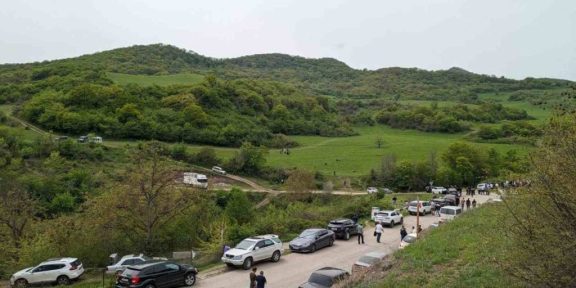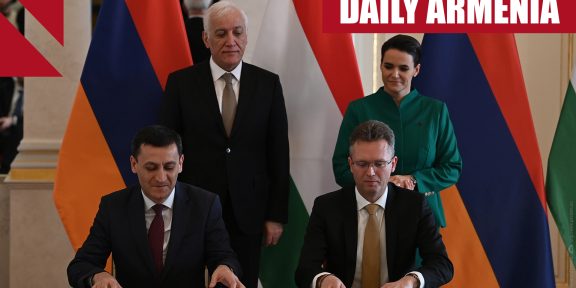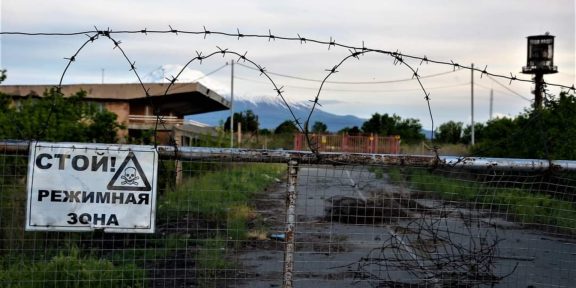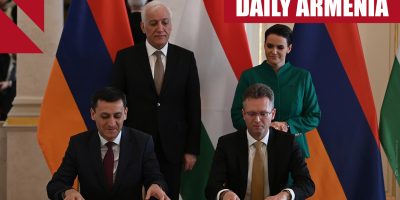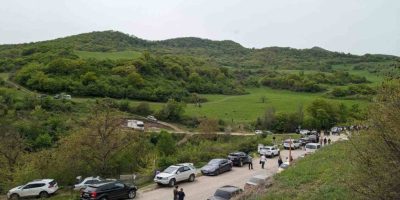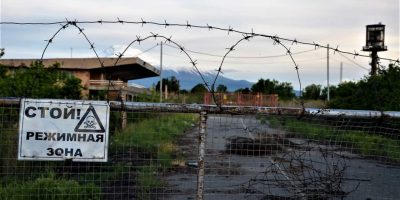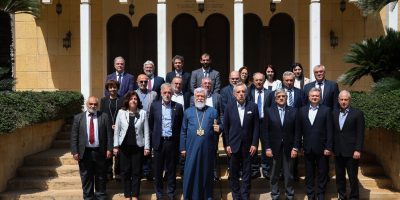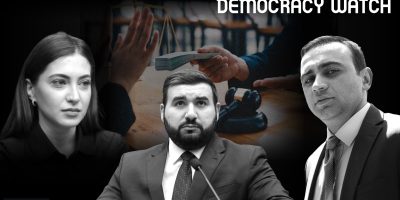FIRST PERSON
By Tenny Armine Yildirim
YILDIRIM. That’s my name. It means ‘lightning’ or ‘thunderbolt’ in Turkish. A very Turkish name for a very Armenian girl. In fact, a very common Turkish name, like Dupont in France or Li in China. The weight of this name follows me since the day I was born. At school in France, teachers would, every year without exception, ask me if I was Turkish. There follows a moment of embarrassment, for them, when I tell them that I’m Armenian. It is true that my appearance doesn’t help. Wait until you hear my first names. Tenny and Armine. According to my former Armenian teacher, “Tenny” means freshness. My parents wanted to give us names that ended with the letter Y and my teacher is the one who gave them the name choices. My siblings are Anthony and Laury. My parents instantly loved the name Tenny. It is true that I bring some freshness to the house. The name of my Armenian teacher is Armine, too, although I don’t think my parents named me after her. No, it’s because otherwise my dad was going to call me Armenia. Too much? Yeah, my family thought so, too.
My dad is from Sasun, Mutki. In Turkey, his name was Erol Haroutioun. Of course, you couldn’t have an Armenian first name, except if you wanted to add one more thing to your list of problems as an Armenian in Turkey. The Turks had already changed Markarian, our real name, into Yildirim a few decades ago. The Turkification of the names didn’t only happen to Armenians from Sasun, but for Armenians everywhere in Turkey.
My mom, whose family comes from small villages near Yozgat, Çat and Menteşe, was born in Istanbul. That side of my family was also forced to have their Armenian last names – Yelegenian and Essayan – change even though they originated from central Turkey.
Ashot, my mom’s paternal grand-father was only 16 when he escaped to the mountains with his dad after the loss of all members of their family during the genocide. He would come back to the village once every few days to eat a piece of bread that the villagers gave him. At the age of 16, I went to Turkey with my mother’s family, to visit their former land and villages.

Surprisingly, some people in the village had always remembered them and gave us a tour. As expected, their home is now inhabited by Turks and is way more spacious. One thing that choked me, is when I learned that a branch of the family became Muslim. To avoid problems, my grandfather’s oldest sister got married at a really young age to a local Armenian, and therefore avoided marrying a Turk (otherwise we don’t know what might have happened to her). When they had kids, they had to raise them as Turks and Muslims in their own household so that their children don’t say out loud, at school or on the streets, that they don’t celebrate the Ramadan, that their parents don’t pray like Muslims, or that they speak Armenian. Apparently, they know that they have Armenian roots and have heard about the challenges that their parents and grandparents had to overcome, but it doesn’t stop them from wearing the veil or raising their own children as Muslims. This is something I can’t agree with, especially when they know the history and choose to ignore it anyway. The same story, with just a few differences, happened on my father’s side.
In his teenage years, my dad and his family moved to Istanbul. He was schooled in an orphanage with his siblings, where his parents were also working. Beyond taking in orphans, the ‘aim of the orphanage was to go out into the provinces where Armenian families were still present, left on their own and living in fear among the Turks, and take the children to teach them the Armenian language and culture’. The orphanage was better known under the name Gedikpaşa Armenian orphanage, where the late Hrant Dink was also schooled.
On the other hand, my mom and aunt studied in two Armenian schools in Istanbul, Sourp Mesropyan for primary school and Sahakyan for middle school. I would always remember how she told me she couldn’t speak Armenian on the streets to avoid reprisals. My Yaya (grand-mother), who began working at the age of 7 in the tapestry factory and then at the slaughterhouse, worked in the knitting industry, like a lot of Armenians. She continued working in the knitting industry in France, until she retired. My Dede (grand-father) on the other hand was a bootmaker and became a cobbler in Paris.
In January 1980, my father and his older brother flew to France to turn a new page and start from scratch. Soon enough, they created their own knitting company like many Armenians from Clamart and Issy-les-Moulineaux (Paris’ suburbs where many Armenians have settled).
Roughly three months after, on her 14th birthday, my mom and her family came to Paris as political refugees with a single suitcase for five. No jobs, no home, they had to start from the ground up. Within four months, they had already found a three-bedroom apartment to rent and jobs. They still talk about their first meal, the “best meal of their life”, sitting on the living-room floor in the apartment that was now theirs – freshly baked baguette with ham and pickles. My mom was ready to start school in September. She was in a class for internationals, with students who were mostly Armenians, but also some Mauritians, Cambodjians, Peruvians and people from Ex-Yugoslavia – all different ages. Ironically, she was in the same class as my dad’s little brother and my best friend’s father.
My mom attended church choir and Armenian dance with young Armenian adults from the area. There, she met my father’s sister who soon introduced her brother. At the age of 27 and 22 they were married. The rest is history.
My first visit to Armenia was in April 2014, for the 99th anniversary of the Armenian Genocide. In 10 days, we commemorated the death of our ancestors, visited different cities in Armenia and Artsakh, including Sevan, Tatev, Jermuk and Stepanakert. The last two were my favorites, as was the Khor Virap Monastery with the breathtaking view of Mount Ararat. Khor Virap was also the place that disturbed and upset me the most. Such a beautiful Monastery, with the legendary story of Krikor Lusavoritch (Gregory the Illuminator), completed by the magnificent view of Massis and Sis. Then, you look down to see the border kept by the Turkish military and their huts placed every 20 meters, and nearby some farmers cultivating the land. On our side of the border, however, nothing.
I was already proud of being Armenian but this trip made me realize to which point. Since then, I wanted to come back to my motherland to do volunteer work. By the time I was old enough to do so, the pandemic and the Second Karabakh War erupted. I am here now, and my love story with Armenia has just begun.





